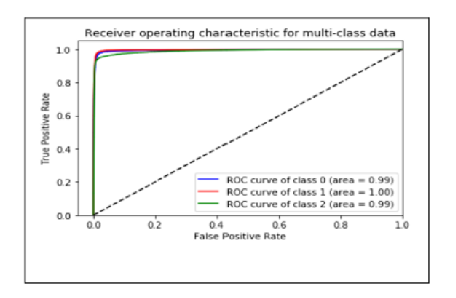


Indian Journal of Science and Technology
Year: 2023, Volume: 16, Issue: 9, Pages: 614-621
Original Article
E Sujatha1*, R Radha2
1Research Scholar, Research Dept. of Computer Science, SDNBV College for Women, University of Madras, Chrompet, Chennai, 600044, India
2Associate Professor, Research Dept. of Computer Science, SDNBV College for Women, Chrompet, Chennai, 600044, India
*Corresponding Author
Email: [email protected]
Received Date:31 May 2022, Accepted Date:05 February 2023, Published Date:02 March 2023
Objectives: To develop a model of multi-class classification which provides better performance for the large dataset. To reduce complexity of the model and to analyse the sentiments of twitter data in an efficient way. Methods: The sentiment analysis has been performed on the New Education Policy 2020. Totally, 105045 tweets were collected from the Twitter database using Tweepy library in python. The sentiment analysis was done on English tweets. The preprocessing and feature extraction was done by using pyspark packages. The hybrid of unigram and bigrams feature sets was used. To extract the labelled dataset, AFINN dictionary was used. The classifiers such as Random Forest in Machine Learning and Convolutional Neural Network, Bidirectional Long Short- Term Memory in Deep Learning were used to determine positive, negative and neutral sentiments of tweets. Findings: The Accuracy (97%), Precision (97%), Recall (97%), F-Measure (97%) and 99% of ROC-AUC with the minimum Log Loss 0.10 was obtained by the hybrid of Convolutional Neural Network and Bidirectional Long Short-Term Memory. Novelty : The complexity of the model was reduced by using Convolutional Neural Network which selects the relevant features. The performance of the model was evaluated by using the various metrics such as accuracy, precision, recall, f-score, log loss and roc-auc whereas in the existing works only limited metrics were used. The efficiency of the proposed model can be proved in any case.
Keywords: Random Forest Classifier (RF); Convolutional Neural Network (CNN); Bidirectional Long Short-Term Memory (BLSTM); Support Vector Machine (SVM); Term Frequency – Inverse Document Frequency (TF-IDF)
© 2023 Sujatha & Radha. This is an open-access article distributed under the terms of the Creative Commons Attribution License, which permits unrestricted use, distribution, and reproduction in any medium, provided the original author and source are credited. Published By Indian Society for Education and Environment (iSee)
Subscribe now for latest articles and news.